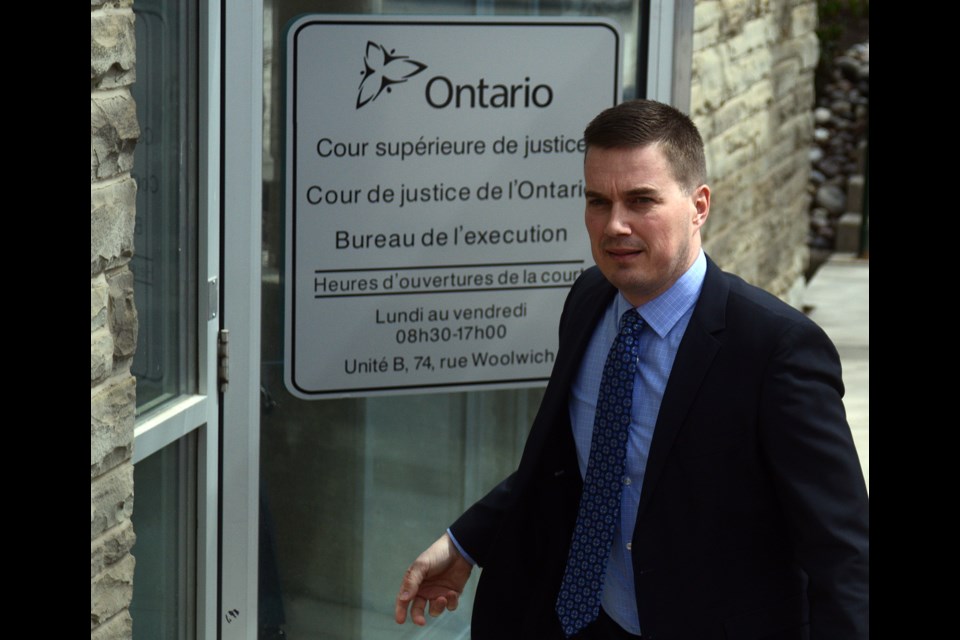(Editor's note: This story contains subject matter and language that some may find offensive).
Graphic photos of the crime scene, victim and accused were put on display on Day 3 of Sean Wade Haverty's first degree murder trial Wednesday.
Photos included Schweitzer's body laying beneath a yellow emergency blanket, a closely-cropped photo of the gunshot wound on Schweitzer's neck taken at the autopsy, a photo of the bloodstained white T-shirt Schweitzer was wearing when he was shot and pictures of Haverty's bleeding and badly lacerated face caused by being hit in the face by a glass bong by Schweitzer just before he shot him.
There were also photos of a bullet hole in a door frame, the second shot that Haverty fired that missed Schweitzer.
Members of Schweitzer's family, including his mother, remained outside the courtroom while the graphic photos were being shown.
The day was spent mostly talking about the blood found at
The question isn't whether Haverty shot Schweitzer, it's about the circumstances surrounding that shooting and whether it was first degree murder.
"It is absolutely conceded before this jury that my client killed Chris Schweitzer. This is not a mystery to you. This is not a whodunit," said defence counsel Ari Goldkind.
"What this trial is about is what happened between Mr. Haverty and Mr. Schweitzer in those few minutes."
Testimony and cross-examination on Wednesday centred around where Haverty was when he shot Schweitzer and where he was when Schweitzer hit him with a glass bong just before being shot.
Det. Sgt. Michael Davis of the Guelph Police Service was the day's lone witness.
Davis, a 19-year-veteran, supervisor of the Guelph Police forensic identification unit and expert in blood stain patterns, arrived at the crime scene half an hour after Schweitzer had been killed.
Later that night he was called to
"Sean Haverty was inside the sunroom after he was bleeding" and the screen door that led to the sunroom, or porch, "was closed,"
He later agreed that he had no way of knowing where Haverty was when he was hit with the bong and started bleeding, only that he was inside the porch bleeding at some point.
Crown Attorney Judith MacDonald walked
Goldkind attempted to show that the possibility existed that Haverty was not inside the porch when Schweitzer shattered a glass bong across his face.
Under cross-examination,
"How long was Sean Haverty in the porch, if he was there at all?" Goldkind asked.
"I have no idea,"
Several witnesses offered testimony earlier that indicated Haverty was impaired at the time of the incident.
At one point Davis said Haverty "appeared fine with me" in regards to questioning from the Crown about Haverty's "state of sobriety" when he saw him later that night in Fergus.
Goldkind used cross-examination to highlight the fact that
The court also saw pictures of a blood trail from the crime scene to Haverty's home two doors down Tiffany Street, to the backyard shed where the .38 calibre revolver used in the crime was later found and into a bathroom inside his house where a bloody mess was left.
The trial continues Thursday.
